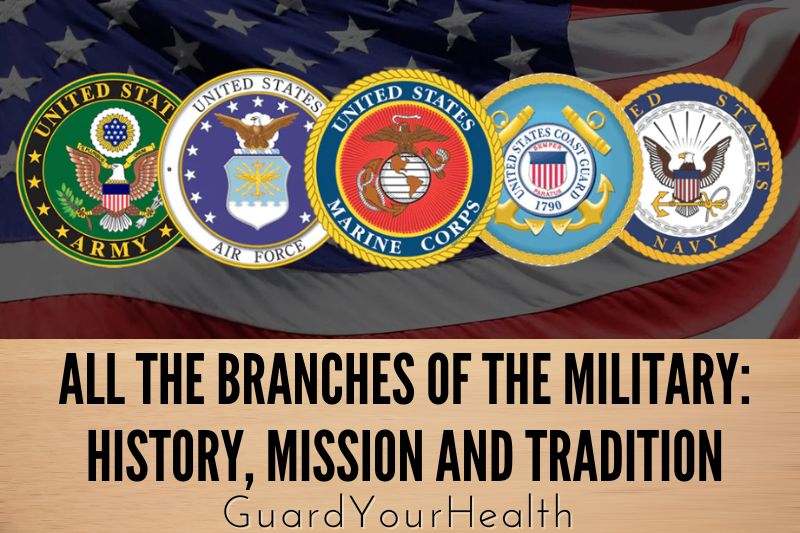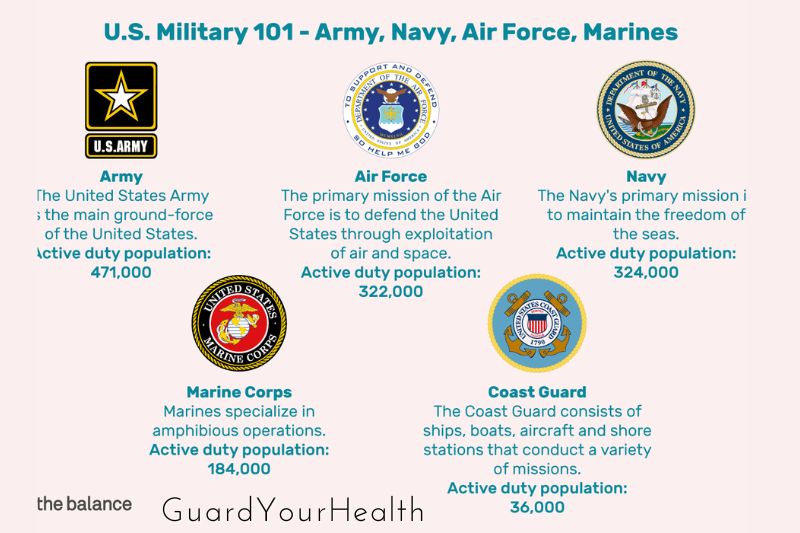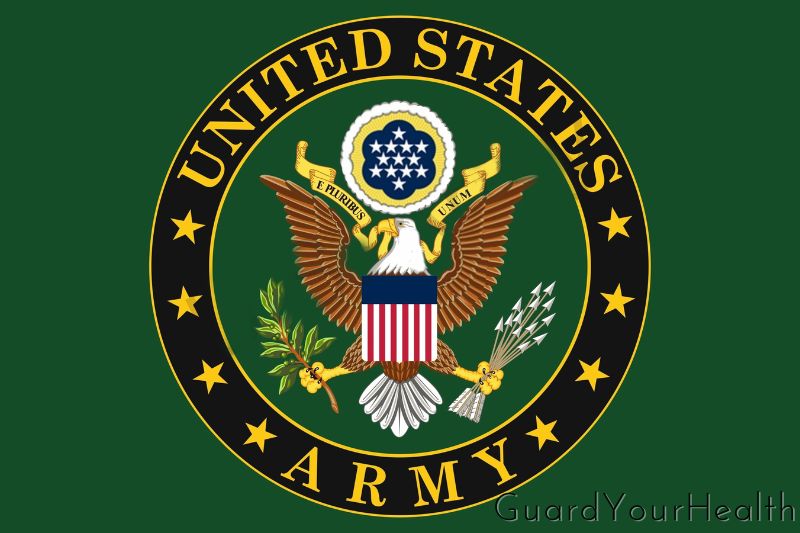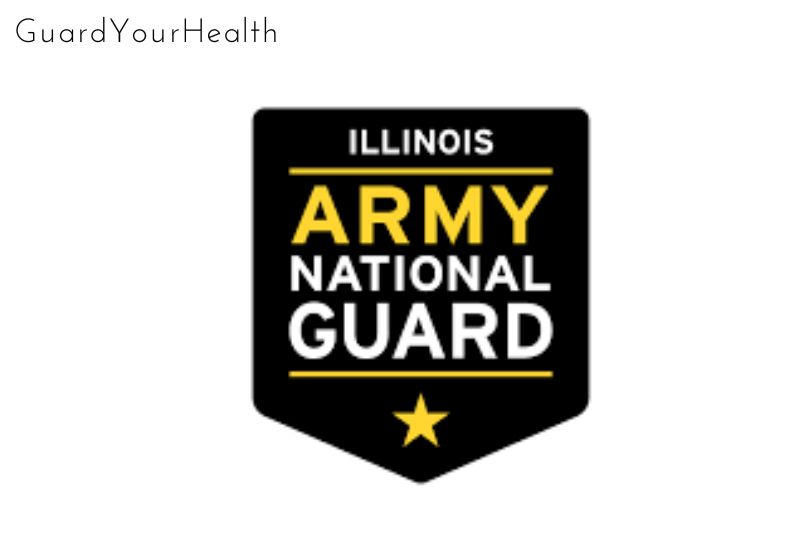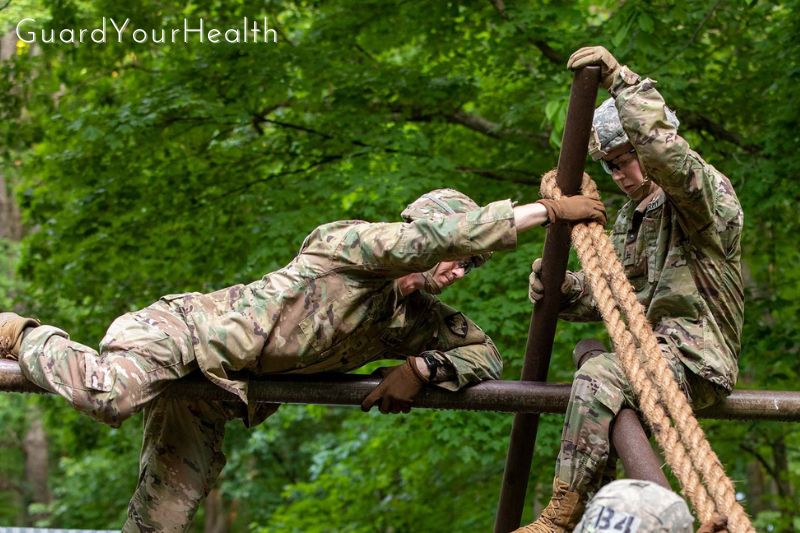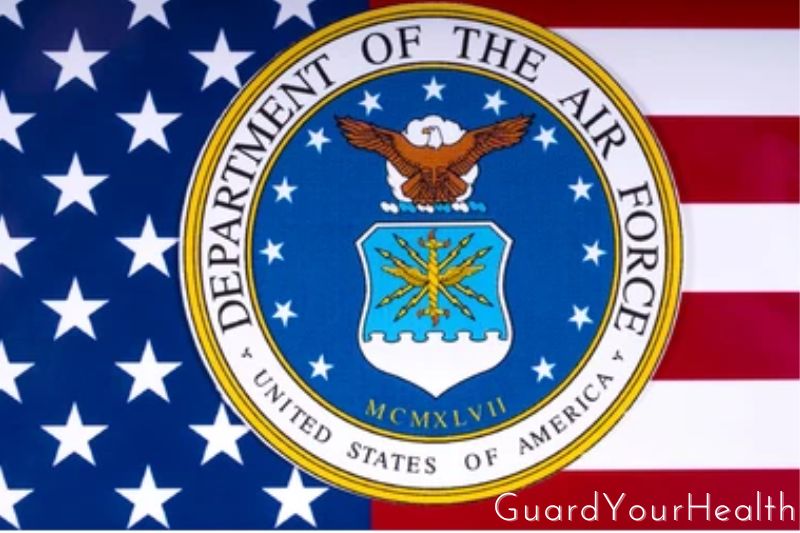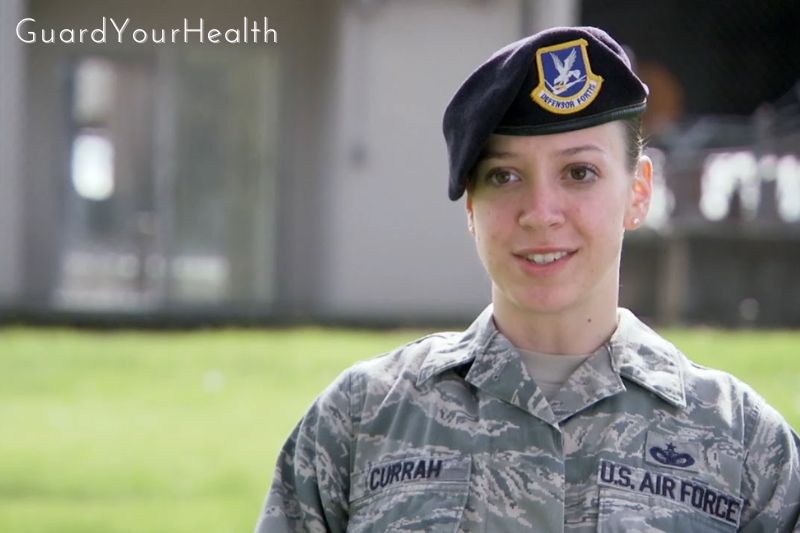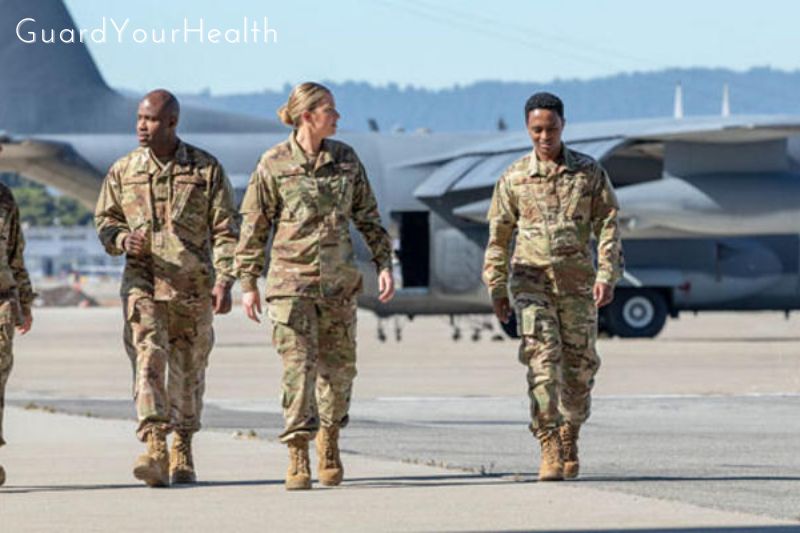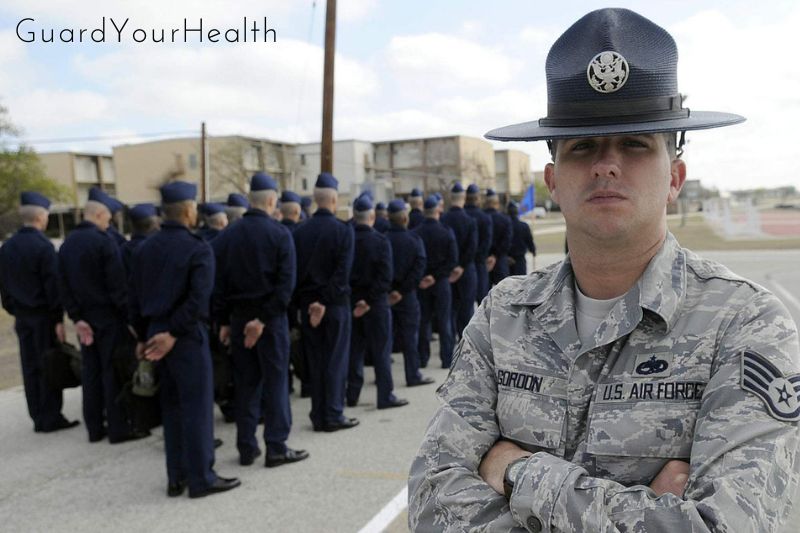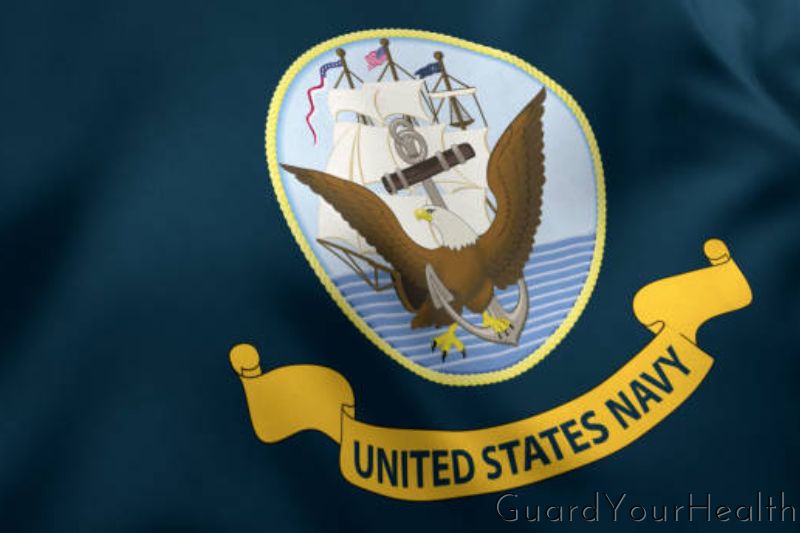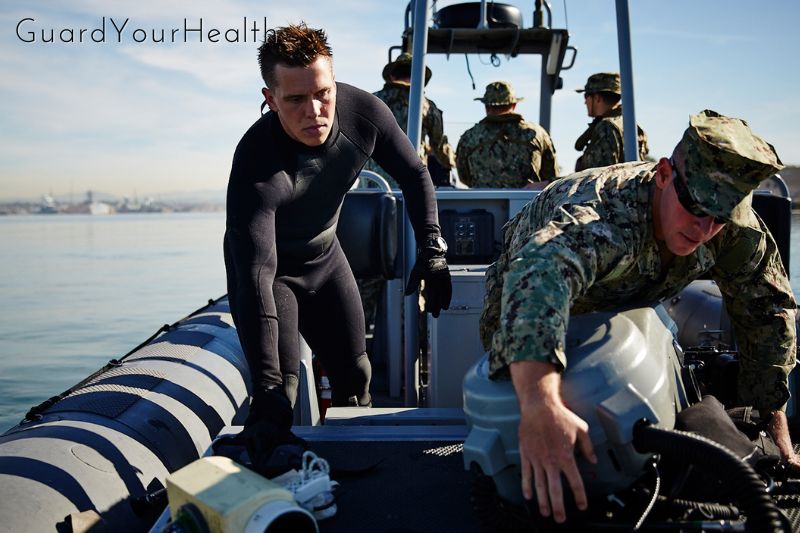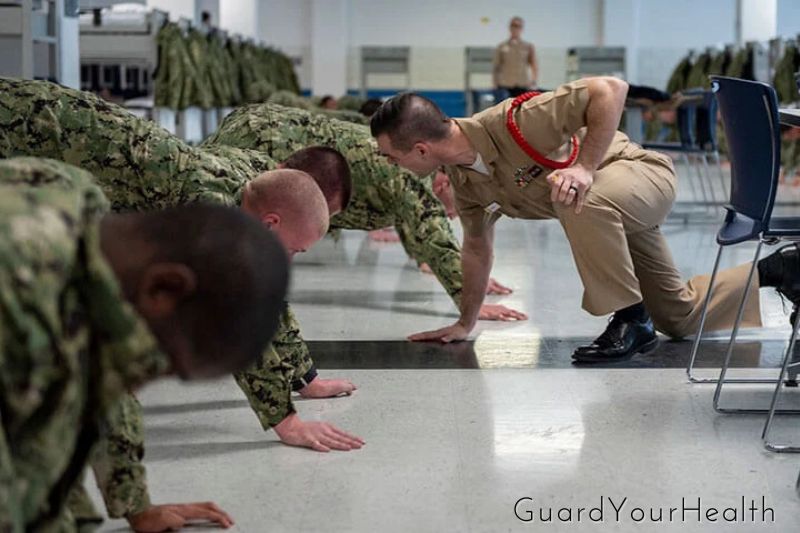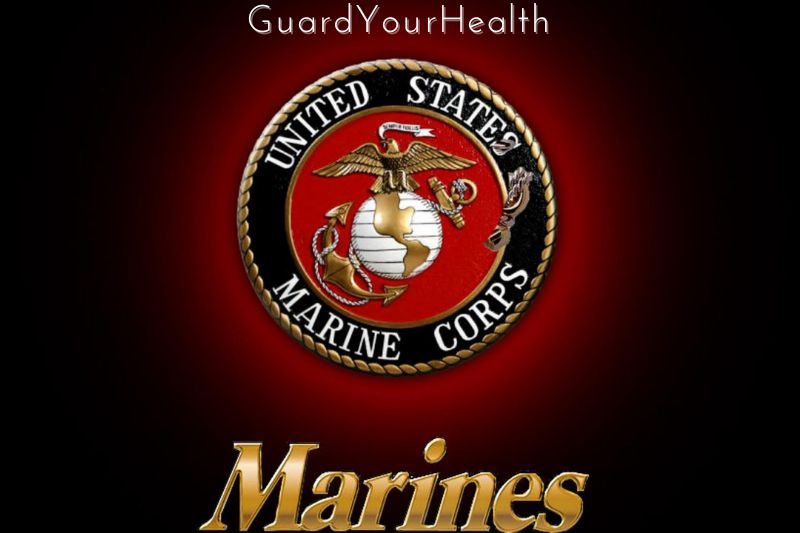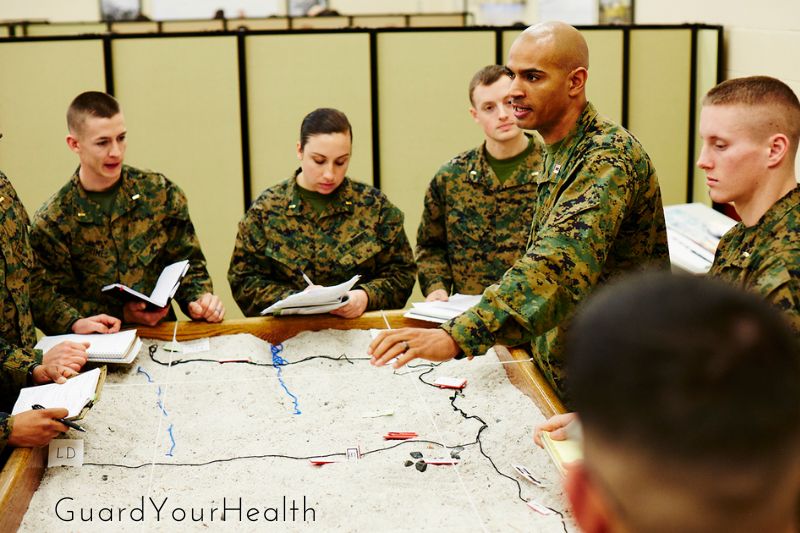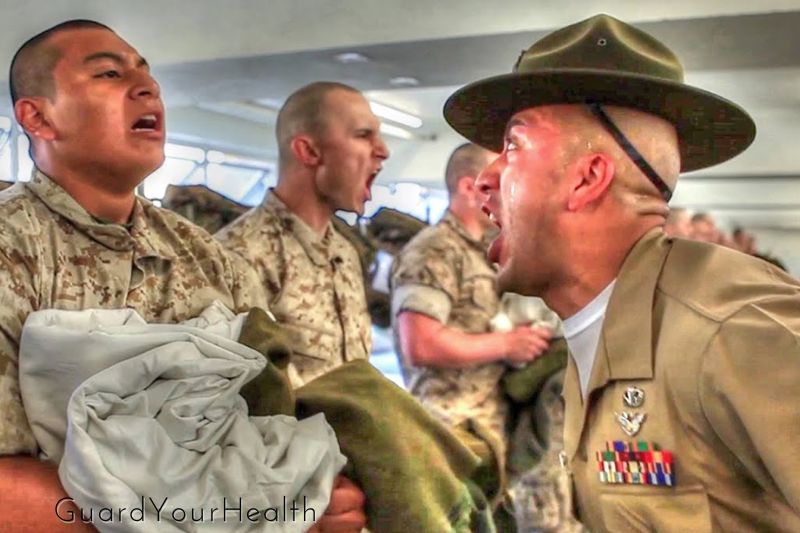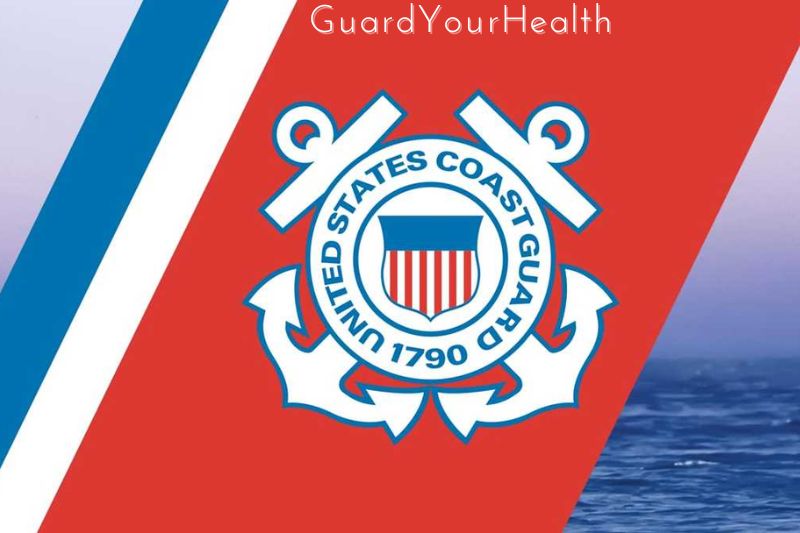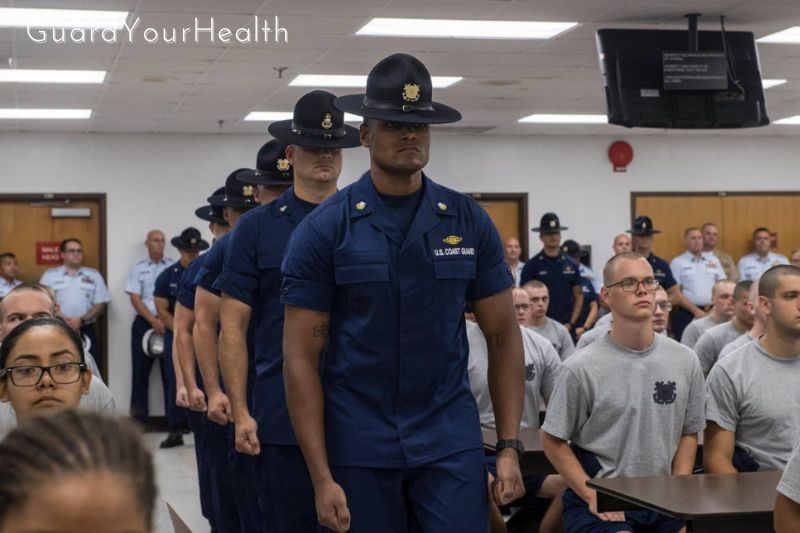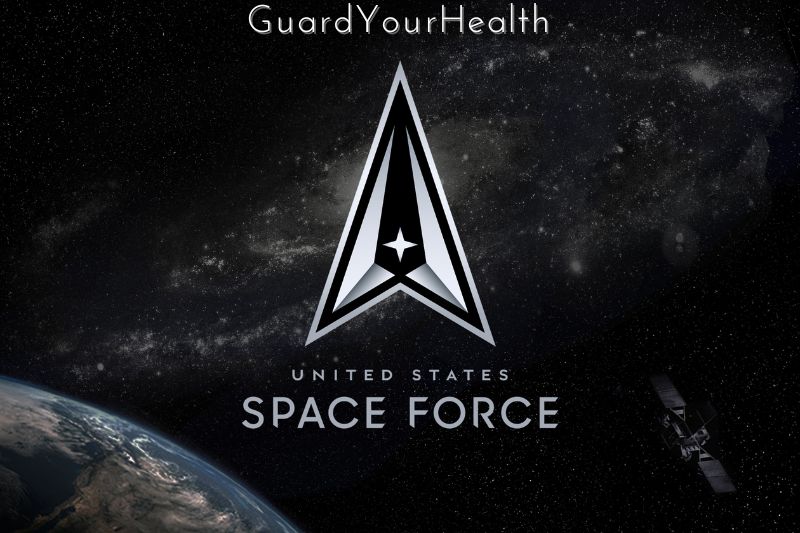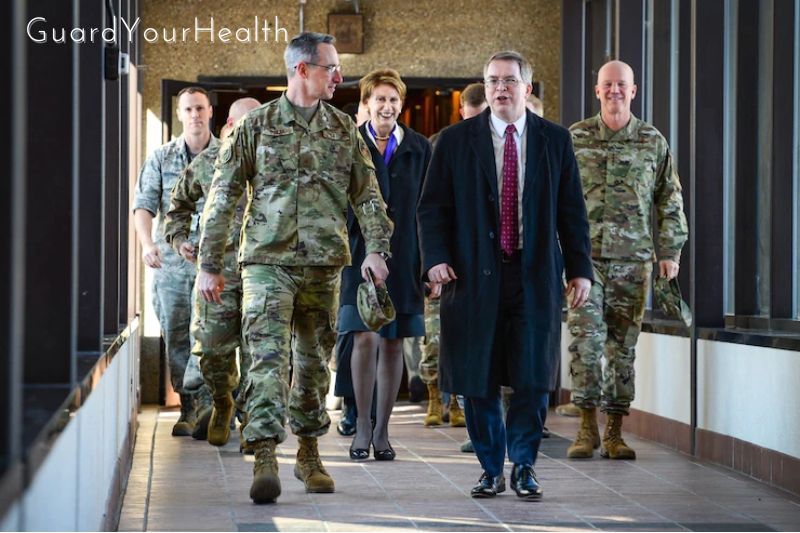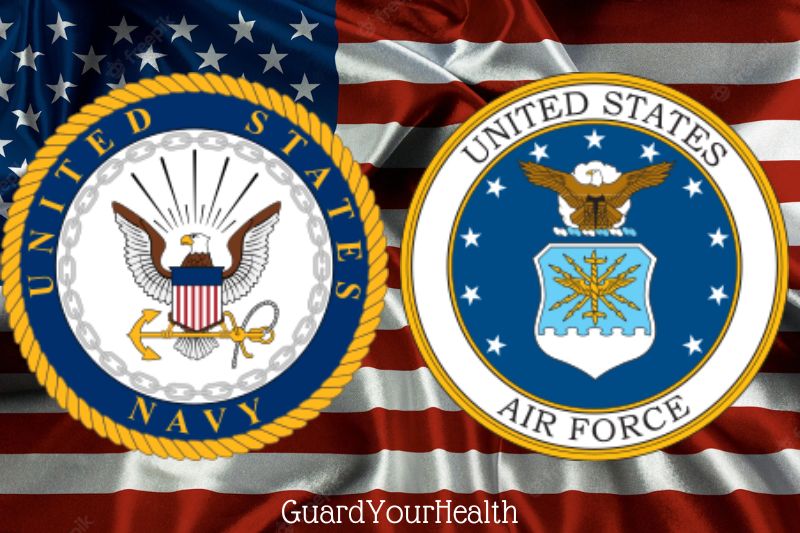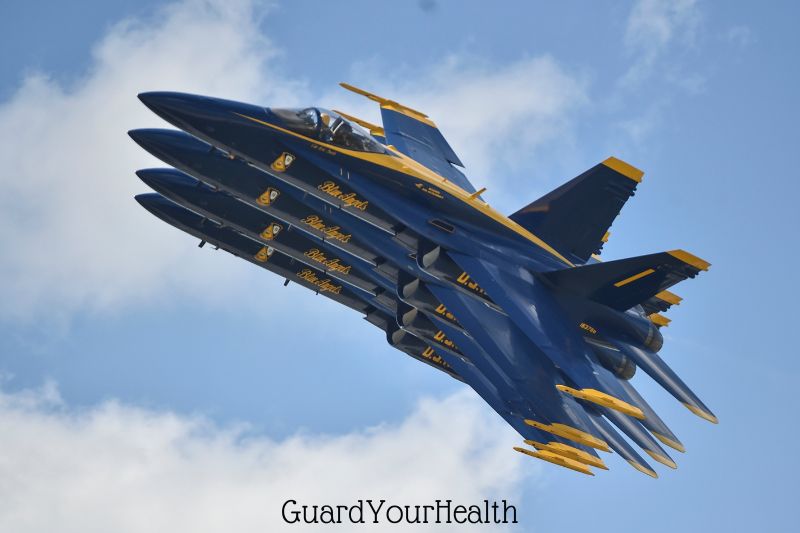The military of the United States is comprised of five branches: the Army, Navy, Marine Corps, Air Force, and Coast Guard. Each branch is responsible for different defense areas and has a unique history.
In this blog post, GuardYourHealth will provide you full of information about United States Military Branches. Let’s start.
History of The United States Military Branches
The military was ahead of schedule, despite the common misconception that the United States did not exist until at least 1776. Right before the War for Independence, rebel leaders formed the U.S. Continental Army to defend the colonies’ interests against the British.
The formation of Continental Navy, which the Continental Marines swiftly followed in November, was created in October 1775. In 1790, the Coast Guard was created when the United States gained official independence. The UK’s top-notch, sizable Navy increased the need for these services.
The ability to fight against the British was crucial because most early colonies relied on coastal seaports for subsistence, let alone trade.
The newest branches of the American military are dedicated to aviation. In fact, the Air Force was established in 1907, not long after the development of airplanes.
In 1947, it split from the Army and established an independent division. The U.S. Space Force, an airborne organization, dedicated to safeguarding American interests from above, comes in last. It was created in 2019.
All The Branches Of The Military
Army
The United States Army, which is the nation’s oldest branch of the armed forces, acts as a ground force to defend American interests and maintain stability at home and abroad. The army currently has a roster of close to 500,000 men and officers. Some people might work part-time for the Army National Guard or Army Reserve.
The remaining people work full-time jobs that can last anything from two years to a lifetime. Some people join the military and advance via the ranks, while others take part in programs that prepare them for eventual promotion to the rank of officer.
The army is divided into squads of men, each led by a commander qualified for the task. Names of these units include:
- Squad
- Platoon
- Company
- Battalion
- Brigade
- Division
- Corps
Each unit may or may not have a certain number of members; it largely relies on each member’s duties. Higher-ranking officers, such as colonels or generals, are in charge of units with thousands of members.
Enlisted troops may still follow orders from the officers in charge of their company in these larger organizations. The army is very hierarchical, so most orders come from higher up in the organization.
Army Reserve
People can join the Army Reserve on a part-time basis without committing to full-time service as a soldier. All enlisted soldiers in the army receive the same fundamental training, including reserve members. As a compromise, they are made to be prepared to mobilize if necessary.
Otherwise, they agree to work one weekend each month and two full weeks each year. As a result, they are better able to maintain their talents and participate in limited army programs relevant to their service period. To finish their term, many army regulars enlist in the reserve.
- Read more: Active Duty Vs Reserve
Army National Guard
The Army National Guard is designed to be a part-time option for those who join it, much like the Army Reserve.
Members of the Army National Guard remain domestically to support American interests at home, unlike other reservists who may be summoned to serve anywhere the United States has an army station. They get the same instruction and preparation as everybody else who joins the army.
In return, they are prepared to present themselves for reporting to their state’s governor in an emergency. If not, they can decide to work or go to school in their state.
Army Basic Training
Army Basic Training typically lasts 10 weeks and involves arduous practice, study, and exercise. The training period will vary depending on the individual’s military occupational specialty (MOS).
Some specializations call for participants to stay in the same unit for their basic and advanced training, which might extend the training period by several weeks. People may be summoned to one of four places South Carolina, Georgia, Missouri, or Oklahoma.
The training will likely last many hours each day, which is far longer than a typical workday. Throughout this period, they will:
- Learn the language and terminology used by the army.
- Study military history and customs.
- They should work out to increase their stamina and physical strength.
- Develop your MOS-related abilities
Demonstrate on numerous instances that they are capable of meeting the necessary mental and physical requirements for a soldier.
The course is frequently broken up into segments that last a few weeks each. Each of them focuses on a distinct aspect of the unique duties enlisted soldiers play.
There are things folks may wish to do in advance to prepare because basic training can be a taxing process. The first is to enhance their physical health and capacity to continue physically demanding labor for extended periods. They might also decide to look at well-known elements of the army, such as the phonetic alphabet, values, or ranks.
Most persons proceed to Advanced Individual Training to improve abilities specific to their MOS after their training is finished. It might take place there or some other place.
Considerations
In the end, the majority of individuals who decide to join the Army do so because they want to be a member of a ground force defending the United States or its interests abroad.
The Army has often moved in big formations, but the demands of the twenty-first-century call for a more specialized, smaller force. Anyone joining the Army must be ready to go on land, regardless of the type of land. In return, they can be given a chance to travel widely and spend a lot of time outside.
Air Force
In 1947, the United States Air Force was established. Over 300,000 people are actively serving in this fiercely competitive branch of the American military. It is not just one of the newest independent branches but also one of the most adaptable.
People in the Air Force can work in a range of roles or organizations, such as maintaining air dominance, launching global attacks, managing information, or providing combat support. The Air Force can deploy personnel almost anywhere in the world, and they can frequently do it far faster than other branches.
Interested candidates must pass the Armed Services Vocational Aptitude Battery in order to be eligible for the Air Force. This test’s objective is to ascertain a person’s potential suitability for a variety of military positions.
People typically need to achieve very high test scores in order to be eligible for the most sought-after Air Force positions. People may be able to obtain positions with less emphasis on direct combat that are comparable to civilian employment in exchange for this qualification. This contributes to this branch’s competitiveness combined with a better pay rate.
Air Force Reserve
Nearly 20% of the entire Air Force comprises the Reserve. Without prior military experience or as a method to continue their service on a part-time basis, members of the Air Force Reserve may choose to accept this position. The training is the same for those who join the Air Force Reserve.
Depending on their ASVAB results and the employment opportunities at the moment, they might also decide to accept comparable positions. In exchange for their part-time employment, they receive full-time benefits, understanding that they can be needed at any time.
Air National Guard
Like the Army National Guard, members of the Air National Guard go through basic training before serving sporadically with one of the 140 units spread out across the country. In general, joining requirements are comparable to those for the Air Force.
The ASVAB test must be taken by applicants who are between the ages of 18 and 38. The Air National Guard, in contrast to the Army National Guard, is available for federal and state government use. Air National Guard troops typically work out of their home states but could be called elsewhere.
Air Force Basic Training
Like other branches, Air Force Basic Training is a full-time endeavor to improve physical fitness while studying the requirements for every duty in this branch of the military and the Air Force’s standards.
The average person finds that this nine-week time gives them a lot of knowledge and practice changes. Due to the shorter training period than in other fields, most information is introduced immediately.
Participants initially begin to hone their physical skills. Additionally, they fulfill the fundamental requirements, such as medical visits and vaccines, to join the Air Force. They gain more knowledge of the branch’s standard operating procedures as the weeks go by.
Once they have begun to increase their endurance, they begin to learn how to use weapons and prepare for battle. In conclusion, they are prepared to move and take their last exams.
Before receiving an official date, people find it helpful to spend some time getting ready for the tasks they will complete during basic training.
Many aspiring soldiers concentrate on physical feats like their capacity to complete a mile in under ten minutes or a bigger quantity of push-ups or sit-ups. They must also take into account the psychological and mental factors.
The Uniform Code of Military Justice, saluting, and reporting protocols are all things that people might wish to learn and work on remembering over time.
Considerations
Given its focus, the Air Force is usually viewed as a great method to prepare for a career in the private sector after serving in the military. One can position themselves for high-paying careers in the information or consulting by having access to technology and investing in paid training.
People who serve in the Air Force may engage in battle, although it usually takes place in a far more indirect manner. In rare circumstances, it might even be remote, controlling machinery from a great distance.
Navy
In order to safeguard American interests on the water and close to seaports, the United States Navy was founded in 1775. In addition to the roughly 100,000 reserve personnel, the U.S. Navy has close to 350,000 active duty personnel.
After joining the Navy and completing their training, members may be assigned to one of the over 300 ships at sea or a local port. While many Navy personnel engage in direct combat when necessary, others serve in support positions on ships or in American territory.
Navy SEALs and Navy Divers are two elite teams that need specialized training and placement in a fiercely competitive force.
Most people who join the Navy are expected to commit for at least four years. Some obligations require a shorter term. A brief period of intense instruction is typically followed by enrollment in a program with more than 80 specializations.
Depending on their positions, sailors in the navy may be stationed practically anywhere in the world. Some of these jobs might be on aircraft carriers like miniature floating cities. A specialized army that is prepared to mobilize swiftly is the end consequence.
Navy Reserve
Like other branches of the military, the Navy maintains a reserve force prepared to assume a full-time position as necessary. Between 18 and 35, anyone may decide to enlist in the Navy Reserve after passing the ASVAB test and demonstrating that they are physically capable of handling the requirements.
After serving on active duty for years, many current service members opt to join the reserves because it allows them to work part-time while still receiving the same training and many of the same advantages and possibilities.
Navy Boot Camp
Navy Boot Camp is a roughly eight-week program for developing endurance and preparing for a career in the Navy. People are typically stretched to the maximum of their stamina and energy during this time. Training on Lake Michigan consists of a range of exercises and tests intended to simulate combat or other important shipboard tasks.
Everyone reporting to boot camp first must successfully complete the Initial Navy Fitness Assessment. They must complete this task in a specified period of time, with different numbers for men and women, while running a mile and a half. If they don’t pass the first time, they must retake it and succeed within two days.
Some people might decide to begin doing comparable workouts before they go. Generally speaking, it is simpler to develop endurance when recruits are already physically fit to a respectable level. Those who pass the initial exam might progress to mastering more challenging physical exercises, such as many battle stations that address different facets of Navy life.
While developing their physical capabilities, trainees also learn about Navy orders, regulations, and traditions. People should prepare to spend numerous hours studying and memorization because these can be difficult to learn.
There are times when people need to be able to recite facts off-hand. Those who successfully complete the training will receive a diploma and instructions on where to report.
Considerations
A high-powered, prestigious job and frequent enlistment bonuses are two benefits of joining the U.S. Navy. There are 80 different specializations and subspecialties. However, some are more sought-after and difficult to enter than others.
Generally speaking, people will base their eligibility to apply for jobs on their ASVAB score. A few well-liked programs are:
- Naval Air
- Naval Nuclear Power
- Navy Special Operations
This employment will only be open to a select few candidates. To better their chances when their terms are up, people can study various technologies or fields that are important to certain Navy posts, like medicine.
Marine Corps
The United States Marine Corps is somewhat different from the American Army and American Navy in terms of its members.
Marines are specifically trained for fighting on land and water. This indicates that they prioritize fighting, much like the Army. They are trained to battle in a multitude of environments, which is their key point of differentiation.
Since the formation of the first battalions in 1775, this has been the Marines’ primary objective, even though this branch was not formally divided until decades later. The number of Marines on active service is considerably lower than that of the Army, Navy, or Air Force, at less than 200,000.
Marines must commit to a minimum of four to six years of service, which is longer than several other branches require. Eligible applicants are often younger as well. Those who wish to enroll must be between the ages of 18 and 29 and possess a high school diploma.
Each candidate must go through a 12-week training program in California or South Carolina. They can be posted anywhere in the world once approved. Marines who want to become officers often need to enroll after finishing a college ROTC program or finish it while they are in the service.
Marine Corps Reserve
There are fewer than 100,000 members of the Marine Corps Reserve. Numerous them are former Marines. They value the opportunity to continue receiving benefits and a part-time salary while pursuing civilian employment or further education. Even though this is the traditional path, some people join the Reserve immediately.
Nevertheless, they go through the same 12-week training, and just as in other branches, reservists put in two annual training weeks and one monthly weekend to keep their skills sharp.
Marine Corps Boot Camp
Recruits are assigned to Marine Corps Boot Camp based on their region and gender. Women and people from the east of the Mississippi both visit Parris Island in South Carolina. West of the Mississippi, men travels to San Diego, California.
Boot camp is intended to develop a recruit’s skills and strength for their time in the Marines while assessing their ability to endure the physical demands of warfare on land or at sea.
The Marine Corps Boot Camp is structured similarly to the Army. Each of them focuses on a distinct type of obstacle that recruits must overcome in order to pass.
The Marines, like other branches, need applicants to pass a preliminary physical fitness exam. It can be beneficial for many recruits to gradually prepare for the test over the course of a few weeks or even months.
The first stage is all about endurance and learning about Marine traditions and history. When learning marksmanship, recruits spend a lot of time practicing on the field in the second phase. The third phase, which is regarded as one of the most challenging to complete, focuses on how to survive in a hostile environment.
For years, the fourth phase demonstrates to recruits what it takes to be a Marine. The Crucible, the last phase, is a two-day competition where recruits can show off what they’ve learned and demonstrate that they are prepared to graduate. Graduates receive a brief leave after completion before reporting for duty.
Considerations
For those who seek a whole experience centered on combat, the Marine Corps is the best option.
People who are looking for a chance to fight would be good candidates for the Marines because they devote a lot of time to learning the most effective strategies for conducting battle. Because they may be used for both landed infantry and amphibious assault, marines are among the easiest to deploy.
However, those hoping to join the military as a stepping stone to a civilian job should pick a different branch. The Marines have several specialties, but those who want to pursue a career in medicine would need to receive training elsewhere.
Coast Guard
Despite being a part of the American military, the Coast Guard’s missions can diverge dramatically. The Coast Guard’s purpose is to:
- Security
- Defense
- Search and rescue
- Law enforcement
The Coast Guard is distinct from other branches that work under the Department of Defense since the U.S. Department of Homeland Security governs it. Its management may be transferred to the Secretary of the Navy during times of war. This has only happened twice, though.
The first was tied to World War I and arrived in 1917. The second, pertaining to World War II, happened in 1941.
People who desire to remain in the United States while still serving their country can consider joining the Coast Guard as a profession.
Many individuals view this branch as excellent preparation for careers in the security or police industries because it places more emphasis on local enforcement and less on military work. It is one of the smallest branches, with fewer than 50,000 active-duty members.
The Coast Guard requires its members to have excellent swimming abilities, which they must regularly maintain. One of the most prestigious jobs in the military is held by the personnel who conduct search and rescue operations.
Coast Guard Reserve
For persons who can fulfill the service’s demanding training and fitness standards, the Coast Guard Reserve has some of the most accommodating age requirements. Especially if they have prior experience serving on active duty for the Coast Guard, adults up to the age of 39 are urged to apply.
The Coast Guard offers recruits and reservists the same training as other military branches do. As long as they maintain their abilities with regular sessions occurring at least once a month, reservists are given flexible options for working and living once their training is complete.
Coast Guard Boot Camp
The Coast Guard Boot Camp is in New Jersey and lasts for around eight weeks. Each week, emphasis is placed on improving physical abilities and studying rescue methods and other coastal seamanship skills.
Recruits must successfully complete a midterm exam and many fitness tests throughout the training process. Because people are relying more on their physical strength than the use of weapons or tools, the fitness requirements are more stringent than they are for many military recruits.
The emphasis on swimming is one of the main differences between Coast Guard Boot Camp and other types of basic military training. To pass their initial exam, recruits for the majority of other branches must be able to run a long distance quickly and complete additional body weight activities.
By the start of the second week, Coast Guard recruits must demonstrate their proficiency in long-distance swimming. As a result, persons who are interested in joining the Coast Guard might wish to become in shape by working on their swimming abilities, especially as it pertains to helping others in the sea.
The second portion of Coast Guard Boot Camp focuses on the knowledge and abilities required to uphold American law while operating a vessel, including guns training.
All the abilities developed throughout training have been tested over the past few weeks in a series of simulations and assessments. If a recruit fulfills all qualifications, they graduate and receive their assignments.
Considerations
People who want to work in law enforcement in the future can consider joining the U.S. Coast Guard. People are better prepared for the standards they will need to sustain for other vocations that emphasize physical strength, thanks to the tough requirements for admittance and continued service.
It is also perfect for those who wish to spend a lot of time in the water. Prospective recruits should, however, ensure they are in the best possible position to apply because it is such a competitive branch.
Space Force
The United States Space Force is the newest component of the American military. In accordance with the National Defense Authorization Act for 2020, this branch was established in December 2019.
Despite being regarded as a distinct military branch, Space Force is managed by the Secretary of the Air Force. The Space Force’s main objective is to safeguard American space interests.
Protection of the United States from space and while in space is the main priority. It is the smallest branch of the armed services, with about 2,500 active-duty members.
Although defending Americans from rival interests on Earth is the Space Force’s main objective, the organization also has other objectives. These consist of:
- Exploring and researching space mobility
- Examining how well information can be transmitted over space
- Creating resources for the defense of the United States and its allies
- Increasing defense capacity
- Increasing space survival capabilities
The service’s funding is only guaranteed for the first 18 months because it is so young. After that, Congress must approve funding for it to continue developing and expanding.
Considerations
Despite the U.S. military’s new and fascinating Space Force, those who want to enlist must go through more conventional paths.
Typically, they are required to enlist through the U.S. Air Force and pass its basic training. Only the top candidates are qualified for enrollment in this program due to the high level of training needed for air travel beyond Earth’s atmosphere.
Candidates who meet the requirements may apply for one of 16 specialties, of which half are reserved for Air Force officers. Opportunities might grow as time passes.
Although the U.S. military appears to be a massive entity, it is actually made up of multiple separate entities. These objects stand in for the millions of people who serve as officers, members of the armed forces on active duty, and reservists. Each branch offers a different level of security for American citizens, locals, and allies both at home and overseas.
The Navy and Coast Guard look after the sea, whereas the Army represents the land. The Marines serve as a link, defending American interests on land and water. America’s demands and weaknesses are taken into account by the Air Force and the nascent Space Force.
Once they graduate from training, most personnel serve for at least a few years because it is a requirement for almost every branch. They gain experience during this period that they can apply to a useful civilian life after their terms are up.
What Branch Of The Military Are The Blue Angels In?
The Navy is the Blue Angels’ military branch, despite the fact that they are sometimes confused for the Air Force.
The Thunderbirds are the Air Force’s counterpart to the Blue Angels, while the Golden Knights are the Army’s.
The Blue Angels currently have 17 volunteer officers. The following list of member positions is specific:
The “Boss” sometimes goes by the flight leader or commanding officer.
The commanding officer this year is Brian C. Kesselring, a resident of Fargo (North Dakota).
2019 saw Kesselring join the Blue Angels.
- Right-Wing: Lieutenant Chris Kapuschansky of the Navy.
- Left-Wing: Lieutenant Scott Goossens of the Navy.
- Slot: Major Frank Zastoupil of the Marine Corps.
- Lead Solo: Lieutenant Commander Cary Rickoff of the Navy.
- Opposing Solo: Lieutenant Commander Julius Bratoon of the Navy.
- Narrator: Lieutenant Griffin Stangel of the Navy.
- Events Coordinator: Lieutenant Katlin Forster of the Navy.
- Executive Officer: Commander Jon Day of the Navy.
- C-130 Fat Albert Aircraft Pilots:
- Captain Wiliam Huckeba of the Marine Corps
- Captain Jackson Streiff of the Marine Corps
- Major Joshua Soltan of the Marine Corps
- Maintenance Officer: Lieutenant Brian Abe of the Navy.
- Assistant Maintenance Officer: Lieutenant Henry Cedeno of the Navy.
- Flight Surgeon: Lieutenant Commander Monica Borza of the Navy.
- Supply Officer: Lieutenant Paul Kruger of the Navy.
- Public Affairs Officer: Lieutenant Chelsea Dietlin of the Navy.
Additionally, there is a group of 100 enlisted personnel (sailors and marines) who serve in support and maintenance capacities:
- Fat Albert Airlines (3 USMC troops): Transport of tools, supplies, and road crew members for the Lockheed-Martin C-130 Hercules squadron.
- Fat Albert Maintenance team (5 USMC men): The C-130 Hercules Fat Albert aircraft are maintained
- Chief Petty Officers and Gunnery Sergeants: Supervise daily operations and give enlisted personnel direction, instruction, and leadership.
- Crew coordinators (E-6 staff, at least): plan ground operations for performances and instruct support and maintenance teams on squadron protocols.
- Administration (4 members): Takes care of directives, announcements, rewards, promotions, and security and legal issues.
- Airframes (11 members): Controls, systems, and gears are maintained.
- Aviation Medicine (2 members): Performs emergency procedures, examines the crew annually, and makes sure everyone is in good health.
- Avionics (Technicians and electricians): Maintain and troubleshoot aircraft systems.
- Crew Chiefs (Maintenance technicians in various specialties): Conduct checks and inspections.
- Events coordinators (2 members): Organize commitments, establish schedules for air shows, and secure sponsors, lodging, and ground support.
- Life Support (8 members): Maintain pilots’ personal flight equipment and life support systems.
- Logistics (9 personnel): Researches, purchases, stores, and distributes uniforms, tools, and parts to support squadron activities.
- Maintenance Control (4 members): Manage, oversee, and organize maintenance on aircraft and records with the help of the four members of the maintenance control team.
- Paint Shop (Maintenance technicians from different ratings): Paint and control and remove any corrosion on aircraft.
- Power Plants ( Aviation Machinist Mates and mechanics): Adjust, replace, and service engines of aircraft, as well as any secondary power systems.
- Public Affairs (3 participants) creates, writes, edits, publishes, and distributes content for the squadron in order to promote the Blue Angels.
- Quality Control (Maintenance Technicians in Various Aviation Ratings): Create, administrate, and review maintenance instructions and technical directives; perform audits for maintenance; examine and oversee maintenance schedules, etc.
There is also a group of technical representatives:
- Administrative Officer: Aries Wilkins
- Boeing Technical Representatives: Landy Harnishfeger and Jack Ralph
- Boeing Logistics Advisor: Todd Lawson
- Financial Analyst: Deborah Johnson
Candidates who satisfy the standards are suggested for Blue Angel service. The enlisted men agreed to a 3-year Blue Angel tour following a thorough screening process that included interviews at each of the 15 squadron work centers.
The Blue Angels are based at Florida’s Naval Air Station’s Forrest Sherman Field during the air show season. The team trains at the Naval Air Facility El Centro in California from January through March.
To Sum Up
The United States military is divided into five branches: the Army, Navy, Marine Corps, Air Force, and Coast Guard. Each branch has its own unique history, mission, and traditions.
Hope that you can find it useful in this post. Thanks for reading!

